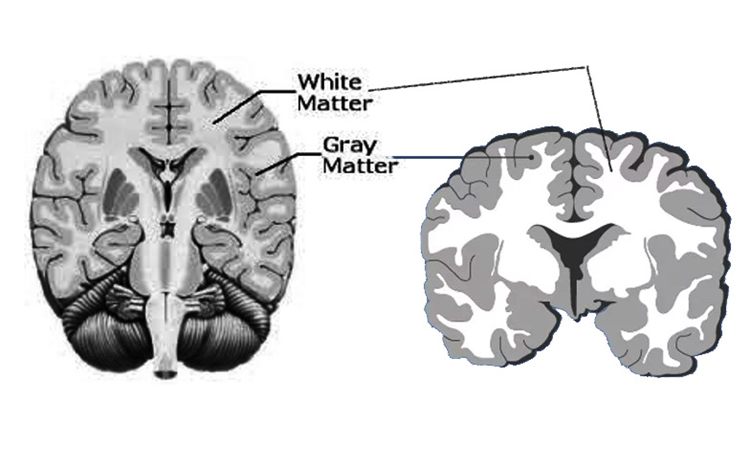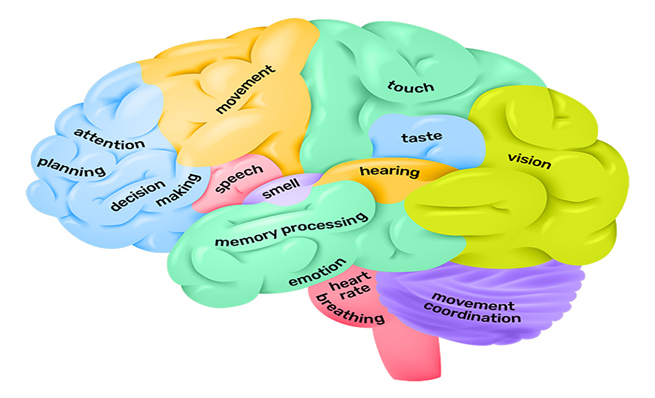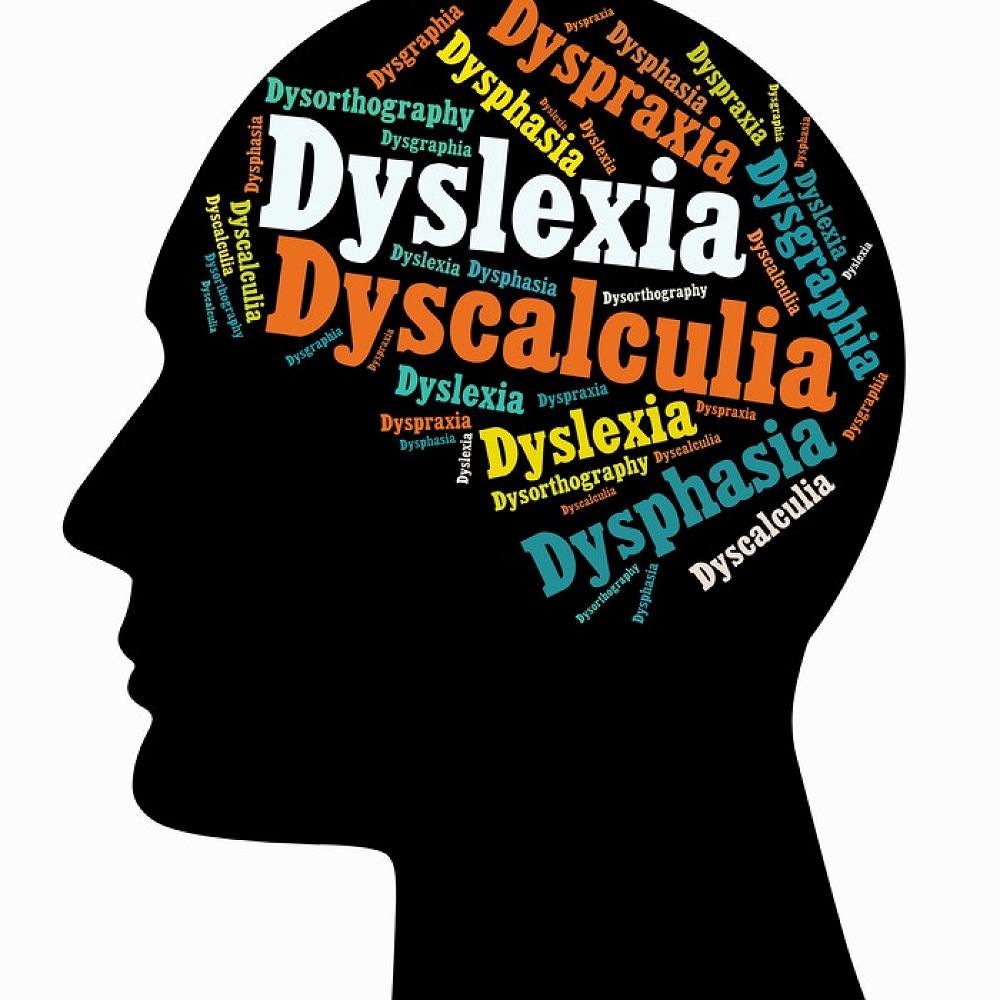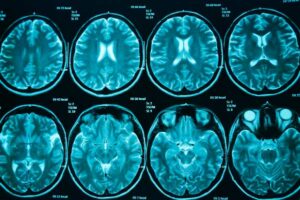
The brain is one of the most important organs in the body. It is in charge of executing all the necessary functions needed for our survival. Some of these functions involve the development of crucial skills that aid in learning and formation of memory. The brain allows us to understand language, abstract ideas, and even math along with other concepts. However, the brain sometimes faces challenges that inhibit its ability to properly execute certain tasks. These challenges are known as learning disorders which involve dyslexia and dyscalculia. Between these two learning disorders, Dyslexia tends to be the most common learning disability. According to the International Dyslexia Association about 20% of the population are affected by dyslexia; while on the other hand, dyscalculia affects about 7% of the population . This is almost half of the amount of people who suffer from dyslexia.1 Even though that is a great amount of people who suffer from these two learning disorders we cannot easily point who they are because many people learn how to cope with them differently. These learning disorders are not often talked about so not many people know how those with these learning disorders are affected. Therefore, understanding how these learning disorders take play or what areas of the brain are impacted by them, we can find ways to lessen the struggle of those who are affected by them.
Some questions to focus on are: what are these two learning disorders and what specific skills do they target? Dyslexia is a learning disorder that affects the person’s ability to read, speak, or spell. This believed to be caused by “a specific impairment in the representation, storage, or retrieval of speech sounds (phonemes).” 2 This mean that the person affected by dyslexia has difficulty retrieving previously learned sounds or correlating it to the letter or words they represent. It is nothing like the myth that dyslexic people confuse the letter b and the letter d, it is more that their brain sometimes doesn’t process the words correctly and they aren’t able to comprehend what they read. Dyscalculia on the other hand hinders the person with difficulty in performing arithmetic skills. Learning more complex math skills proves to be challenging for them. Those affected by dyscalculia are faced with the difficulties of connecting numbers to the quantities they represent, as well as comparing two numbers or quantities.1 Additionally, they are also faced with the challenge of trying to recall previously learned basics like the multiplication table.1 Many students find it difficult to remember the multiplication table no matter how many times they repeat it and try to memorize it. This mainly has to do with the learners’ ability to understand how the multiplication of two numbers leads to the total. These two learning disorders both impact the development of essential skills that each person needs to learn, especially in today’s society. These skills are essential to be able to communicate and to understand how money works.
Although these two learning disabilities impact very distinct skills, it has been noticed that sometimes people who show either of these two learning disorders can sometimes also be impacted by the other. Many of the difficulties those with dyscalculia face in the development of arithmetic skills involves the retrieving of arithmetic facts from long term memory.5 However, those affected with dyscalculia are not the only ones who struggle with memory retrieval, those with dyslexia are also faced with this challenge. Here it can be noted that even though these two learning disorders impact the development of very distinct skills those affected by them are faced with similar challenges. Additionally, it can be determined that different learning disorders can be influenced by similar malfunctions in the brain. Moreover, dyscalculia is also thought to be influenced by phonological processes which is the main challenge that dyslexic people face.6 Phonological processing is language processing, which is important in being able to communicate with others and understand what information is being shared. These two learning disorders affect the “left hemisphere perisylvian brain regions.”7 This region of the brain contains the Broca’s area and Wernicke’s area, which are responsible for the comprehension of language, as well as the development of language. The majority of the content learned by students is received verbally; therefore, the inability to properly process the information learned can cause difficulty in retaining the information. Due to this, the learner faces difficulty in recalling what they have learned or even being able to apply previous knowledge to the content they are currently studying. Apart from the difficulty in developing memory retention for those affected by these learning disorders, there are still other similar factors that are also present in the brains of those affected by the learning disorders.

The brain is a complex organ composed of many webs of neurons that allow for the sharing and receiving of information. Through the use of these neurons’ information is passed throughout the body and to different areas of the brain. The brain is part of the central nervous system that contains white matter and gray matter. Gray matter is composed of neural bodies, dendrites, and unmyelinated axon terminals. White matter is central nervous system tissue that is composed of mainly myelinated axons, that form tracts which help conduct signals.9 White and gray matter can be found all throughout the brain and the spinal cord. While gray matter can mainly be found surrounding the outskirts of the brain; white matter is mainly seen in the middle sections of the brain surrounded by the gray matter. However, gray matter can also be found in the innermost layers of the brain but at a lower rate.8
It can be seen how the cerebral cortex is made up of gray matter, which contains many neurons, that drive the processing of information as well as the release of new information through axon signaling from white matter regions.8 Additionally, the gray matter found in the nervous system enables individuals to control memory along with other functions. This indicates that both gray and white matter aid in the sharing of information as well as obtaining new information. Due to this we can see how dyslexia and dyscalculia can both be caused by a variation in the presence of gray matter. The increase in gray matter allows for higher amounts of processing and mental development of the individual.8 Meaning that the lower density volume of gray matter in the brain leads to a decrease in the amounts of processing.

Those who are affected by dyscalculia have been reported to display a reduced amount of gray matter in the parietal cortex, mainly the intraparietal sulcus (IPS); as well as the frontal and occipital-temporal cortex.14 The parietal cortex is involved in the processing of sensory information received into information that can be understood and applied. Due to a decrease in the gray matter the normal rate of information processing is affected. Additionally, people with dyscalculia have also been observed to have a difference in the amount of white matter present in the inferior and superior longitudinal fasciculus.14 Both the superior longitudinal fasciculus and the inferior longitudinal are areas composed of fiber bundles that connect different parts of the brain to each other. The superior longitudinal fasciculus connects the perisylvian areas to each other.16 ; while the inferior longitudinal fasciculus is involved in connecting the occipital and temporal areas, these areas are involved in visual and language input.17 These areas being impacted by a decrease of either white matter or gray matter will also display a decrease in activity in those areas. Due to this it can be seen how a difference in either gray matter or white matter leads to the possible presence of dyslexia or dyscalculia. The figure below demonstrates the difference in both white matter and gray matter between learners with dyscalculia and those without the learning disorder.
.18
Dyslexic readers have been reported to display less activity and a lower volume level of gray matter in the left and right fusiform gyrus and the supramarginal gyrus.19 The supramarginal gyrus area of the brain is “activated for phonological processing during both language and verbal working memory tasks.”20 Since the retrieval of memory is one of the deficits dyslexic readers faces, we can make a connection about how a decrease in gray matter present in the supramarginal gyrus affects the reader’s ability to recall previously learned phonics and to what words or letters they are associated with. This gives us an explanation of how the Broca’s area and Wernicke’s area are impacted by dyslexia . This decrease in gray matter leads to less neural bodies present so there are less connections to send and receive signals, this increases the processing timing, as well as the amount of activity the brain experiences.
We can see how the presence of the learning disorders of dyslexia and dyscalculia both demonstrate the deficit in similar areas or are caused by similar variations in the brains structure. However, even though similar areas are being impacted the specific regions that determine whether the learner is affected by dyslexia or dyscalculia is different. Each learning disorder targets a specific brain region that can lead to either a deficit in mathematic or reading or maybe both. Additionally, we can see that there are also many brain regions that are involved in processing more than one type of function.

The brain is known to contain synaptic plasticity which allows the brain to adapt and modify itself in order to benefit the learner due to the person’s learning and memory.22 For example, if a person is deaf, then their brain will accommodate itself to diminish the impact this disability has on the person. The brain of this deaf person will instead use the areas associated with hearing for enhancing other senses. The same can be said about the brain of someone who has either dyscalculia or dyslexia. The brain learns to adapt. The presence of a learning disorder does not hinder one’s learning, instead it calls for accommodations that can help facilitate the learning of these skills. For example, some dyslexic people may find it easier to use a computer screen and certain fonts in order to help them read with less difficulty. Those students with dyscalculia sometimes find it easier to use their fingers when doing math. The brain is a magnificent organ that aids in our development throughout our lifetime. Even though there are many learning disorders we can see how their origins are not that different from each other but due to brains’ different regions and functions these learning disorders lead to the difficulty of developing certain skills. The presence of dyslexia and dyscalculia’s impact on the human brain is not widely discussed in today’s society. It is important to also understand how the presence of these learning disorders can overlap with one another and the disadvantages that arise from these disorders.
- Haberstroh, S., & Schulte-Körne, G. (2019). The Diagnosis and Treatment of Dyscalculia. Deutsches Arzteblatt international, 116(7), 107–114. https://doi.org/10.3238/arztebl.2019.0107 ↵
- Rubinsten, O., Henik, A., (2006). Double Dissociation of Functions in Developmental Dyslexia
and Dyscalculia, Journal of Educational Psychology, No. 4, Vol. 98, 854-867.
doi: 10.1037/0022-0663.98.4.854 ↵ - Haberstroh, S., & Schulte-Körne, G. (2019). The Diagnosis and Treatment of Dyscalculia. Deutsches Arzteblatt international, 116(7), 107–114. https://doi.org/10.3238/arztebl.2019.0107 ↵
- Haberstroh, S., & Schulte-Körne, G. (2019). The Diagnosis and Treatment of Dyscalculia. Deutsches Arzteblatt international, 116(7), 107–114. https://doi.org/10.3238/arztebl.2019.0107 ↵
- Peters, L., Bulthe, J., Daniels, N., Op de Beeck, H., De Smedt, B., (2018), Dyscalculia and Dyslexia: Different behavioral, yet similar brain activity profiles during arithmetic, Elsevier Inc. https://doi.org/10.1016/j.nicl.2018.03.003 ↵
- Peters, L., Bulthe, J., Daniels, N., Op de Beeck, H., De Smedt, B., (2018), Dyscalculia and Dyslexia: Different behavioral, yet similar brain activity profiles during arithmetic, Elsevier Inc. https://doi.org/10.1016/j.nicl.2018.03.003 ↵
- Evans, T. M., Flowers, D. L., Napoliello, E. M., Olulade, O. A., & Eden, G. F. (2014). The functional anatomy of single-digit arithmetic in children with developmental dyslexia. NeuroImage, 101, 644–652. https://doi.org/10.1016/j.neuroimage.2014.07.028 ↵
- Mercadante, A.A., Tadi, Prasanna, (2022). Neuroanatomy, Gray Matter, National Library of Medicine. https://www.ncbi.nlm.nih.gov/books/NBK553239/ ↵
- Purves, D., Augustine, G.. (2017). Neuroscience. 6th Edition, Sinauer Associates, New York. ↵
- Mercadante, A.A., Tadi, Prasanna, (2022). Neuroanatomy, Gray Matter, National Library of Medicine. https://www.ncbi.nlm.nih.gov/books/NBK553239/ ↵
- Mercadante, A.A., Tadi, Prasanna, (2022). Neuroanatomy, Gray Matter, National Library of Medicine. https://www.ncbi.nlm.nih.gov/books/NBK553239/ ↵
- Mercadante, A.A., Tadi, Prasanna, (2022). Neuroanatomy, Gray Matter, National Library of Medicine. https://www.ncbi.nlm.nih.gov/books/NBK553239/ ↵
- McCaskey, U., von Aster, M., O’Gorman, R., Kucian, K., (2019), Persistent Differences in Brain Structure in Developmental Dyscalculia: A Longitudinal Morphometry Study, Front. Hum. Neurosci. 14:272. doi: 10.3389/fnhum.2020.00272 ↵
- McCaskey, U., von Aster, M., O’Gorman, R., Kucian, K., (2019), Persistent Differences in Brain
Structure in Developmental Dyscalculia: A Longitudinal Morphometry Study,
Front. Hum. Neurosci. 14:272. doi: 10.3389/fnhum.2020.00272 ↵ - McCaskey, U., von Aster, M., O’Gorman, R., Kucian, K., (2019), Persistent Differences in Brain
Structure in Developmental Dyscalculia: A Longitudinal Morphometry Study,
Front. Hum. Neurosci. 14:272. doi: 10.3389/fnhum.2020.00272 ↵ - Janelle, F., Iorio-Morin, C., D’amour, S., & Fortin, D. (2022). Superior Longitudinal Fasciculus: A Review of the Anatomical Descriptions With Functional Correlates. Frontiers in neurology, 13, 794618. https://doi.org/10.3389/fneur.2022.794618 ↵
- Herbet, G., Zemmoura, I., Duffau, H., (2018). Functional Anatomy of the Inferior Longitudinal Fasiculus: From Historical Report to Current Hypotheses, Front. Neuroanat.
2018; 12: 77. doi: 10.3389/fnana.2018.00077 ↵ - McCaskey, U., von Aster, M., O’Gorman, R., Kucian, K., (2019), Persistent Differences in Brain Structure in Developmental Dyscalculia: A Longitudinal Morphometry Study,
Front. Hum. Neurosci. 14:272. doi: 10.3389/fnhum.2020.00272 ↵ - Kronbichler, M., Wimmer, H., Staffen, W., Hutzler, F., Mair, A., & Ladurner, G. (2008). Developmental dyslexia: gray matter abnormalities in the occipitotemporal cortex. Human brain mapping, 29(5), 613–625. https://doi.org/10.1002/hbm.20425 ↵
- Deschamps, I., Baum, S., Gracco, V., (2014), On the role of the supramarginal gyrus in phonological processing and verbal working memory: Evidence from rTMS studies, Elsevier Inc. Neuropsychologia, Vol. 53, 39-46. https://doi.org/10.1016/j.neuropsychologia.2013.10.015 ↵
- University of Queensland Australia. https://qbi.uq.edu.au/brain/brain-anatomy/lobes-brain ↵
- Ramirez, A., Arbuckle, M., (2016). Synaptic Plasticity: The Role of Learning and Unlearning of
Addition and Beyond. Biol Psychiatry,
doi: https://doi.org/10.1016%2Fj.biopsych.2016.09.002 ↵



19 comments
Xavier Bohorquez
This infographic brought so much information and details to provide a wonderful argument, No wonder it won an award! I was so interested in reading this kind of topic and never noticed the actual attention this kind of condition can have on people. I was super informed on the data and visuals you provided and Im glad I got to read this, You promoting awareness on this issue brings us one more step to make a difference.
Sudura Zakir
Howdy and appreciate it for the nomination. I am aware of many people who battle with dyslexia, therefore I value the attention you brought to it with your outstanding writing. Those who are aware of the condition’s existence but do not have a thorough knowledge of it will benefit from reading this article. I appreciate all of your effort because the knowledge you offered is helpful to a large audience.
Maya Naik
Hello, and congratulations on your nomination. I know many people that struggle with dyslexia, and I appreciate the attention you drew to this issue through your amazing writing skills. Reading this article is helpful to those who are aware that the condition exists, but do not have a complex understanding of the condition. The information that you shared is very useful to a wide audience, and for this reason, I am thankful for your hard work.
Carlos Alonzo
Sometimes when I am writing I think that I am dyslexic because I sometimes mess up my “b” and “d” and my “m” and “w”. I remember that Bella Thorne has this problem and it impacts people in different ways. Obviously, this can affect students ability to perform well in academics and everyday life. Your article does great work bringing awareness to the issue and promoting their success as students.
Joseph Frausto
What an informative article on an interesting topic. I was informed about dyslexia at a young age but had actually never heard of the term dyscalculia before reading this article. You do such a great job of informing us readers about a subject which I’m sure many others are unaware and paint a thorough yet kind portrait of what this disorder does to those with it. Comparing it to its more well known counterpart really helps the info sink in. Congratulations!
Christian Lopez
I have a brother that struggles with Dyslexia since he was in grade school. Reading this article it allowed me to understand more about what he had to go through. This is a type of condition that most people have heard about but most people never truly understand what it truly means.
Illeana Molina
Congratulations on your nomination! I personally have close individuals in my family that have been affected by dyslexia and have struggled all of their lives. Before this day I had never heard of what dyscalculia is considering my mom is a nurse and sees various diagnoses on the daily. Your article was filled with very useful information, and I believe you did an excellent job of grasping the reader with great imagery and colors as well as the ability to hold one’s attention. I do think we need to spread awareness so individuals are not ashamed they should be proud as they work extra hard for what we think is easy they persevere. Great Job !!
Carollann Serafin
I have always understood the concept of dyslexia and actually have family who are dyslexic. It was nice to hear a topic that’s not talked about often or any disabilities that make a daily life function hard. this article was very informative and hit all the directive pints about the impact it can have on someone’s life. I never knew how common it was for people to be dyslexic.
Karicia Gallegos
Congratulations on your nomination! I’ve always had a general understanding of dyslexia, but I’ve never heard of dyscalculia. I think the subject you chose is one that plenty of people would find intriguing to learn about and read about. Your article was filled with very useful information, and I believe you did an excellent job of holding the reader’s attention. I had no idea that 20% of people have dyslexia. Overall, great job!
Jared Sherer
I have always known bits and pieces about Dyslexia, but I have never heard of Dyscalculia. I think your article was very interesting to read and I learned so much from it. I think you chose a very interesting topic that a lot of people would enjoy learning and reading about. Your article was full of great information and I think you did a great job keeping the reader interested. Congratulations on your nomination and very well written article!